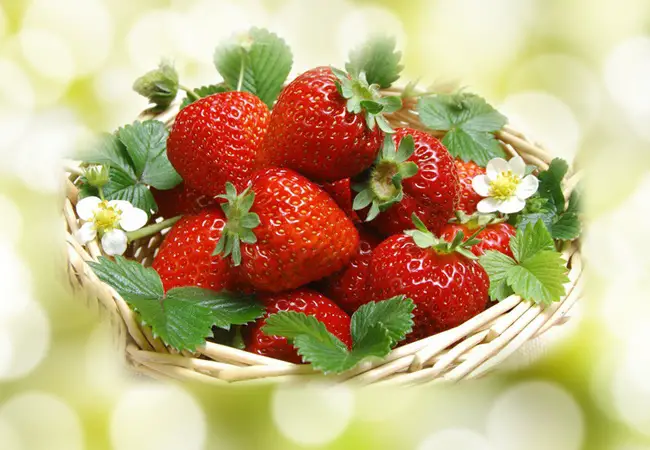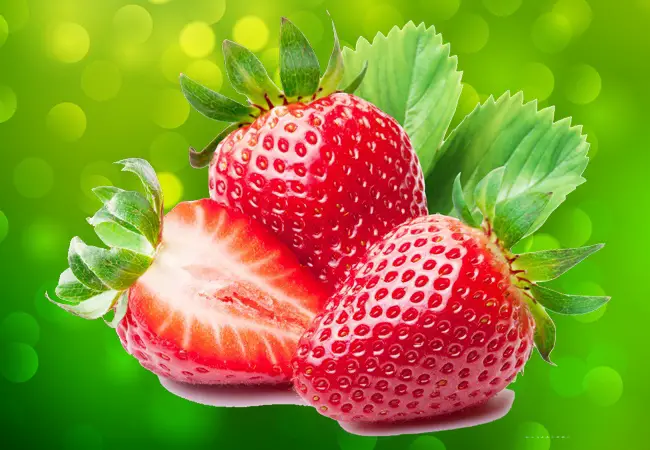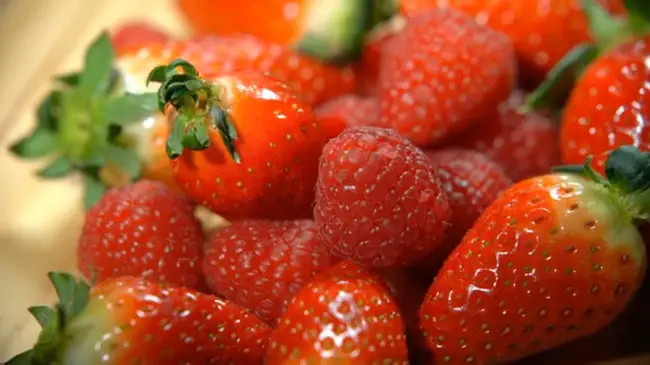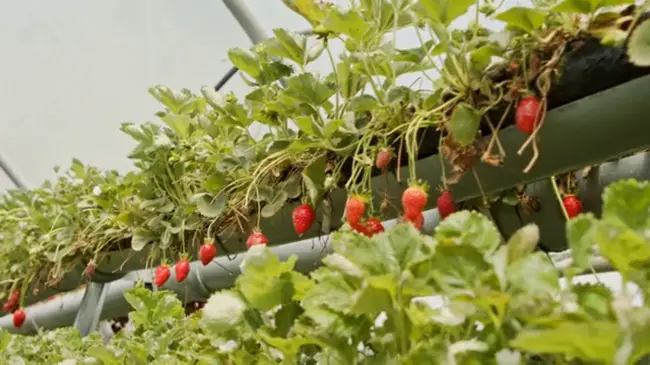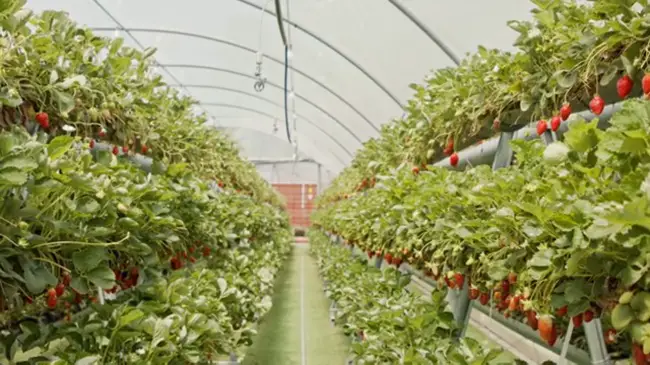Many home gardeners love to grow strawberry plants, as they are quite easy to grow and yield delicious fruit year after year. Generally, each plant will yield about a quart of Strawberries.
The typical way of growing strawberries is from transplants of known varieties with excellent growth records. The strawberry is not strictly a fruit but a member of the rose family.
It could be called the inside-out fruit because its seeds grow on the outside. Strawberries were considered an aphrodisiac in the Middle Ages and traditionally served with borage and cream in a soup to newlyweds for breakfast.
Plant Selections
Choosing a strawberry cultivar is the next task to do. Three types of strawberries can be readily grown for home gardeners: June Bearing, Ever Bearing, and Day Neutral.
June Bearing
This is the most commonly used plant. It bears fruit once a year and is renowned for making large strawberries. June Bearing strawberry produces a large and concentrated crop in late spring. There are more berries each season from June Bearing. Moreover, the entire crop ripens over a three-week period. This plant requires more light.
Some June Bearing strawberries can offer you good yields. The Totem, Tioga, Shuksan, Puget Beauty, Olympus, Northwest, Hood, Douglas, and the Benton.
Day Neutral
This plant will produce fruit right through the growing season, but like the Everbearing, the fruit will not be as large as the June Bearing varieties. The Day Neutral strawberry is capable of producing fruit throughout most of the growing season. It does not require more light as long as it is kept between 35 and 85 degrees Fahrenheit.
Day Neutral strawberry types are Tri-Star, Eversweet, and the Seascape Strawberry.
Everbearing
This type f strawberry will bear fruit two or even three times a year, though the greater amount of fruit will be from the June Bearing variety. The Ever Bearing strawberry produces one crop in Spring and another in Fall. The fruits are smaller, yet they have the greatest flavor.
There are many kinds of Everbearing strawberries, such as the Tristar, Tillikum, Sequoia, Selva, Rainier, Quinault, Ozark Beauty, Ogallala, Lassen Hecker, Fort Laramie, Fern, Chandler, and the Brighton.
Recommended Strawberry Varieties
Tioga, Dover, and Douglas are successful varieties of strawberries in the South. In the Northern states, Allstar and Delmarvel are highly recommended for disease resistance and growing large berries.
Day-neutral and everbearing are ideal types for gardeners with limited gardening space. By growing strawberries suggested for your area, production can extend from early winter through spring, and that makes almost every variety everbearing.
Before Planting
Please seek advice from your nursery person before purchasing plants, as they will be happy to advise you as to which will yield the best crop for your area.
You may also have the soil tested by the local nursery, or they can direct you to have your soil tested to make sure that it is primed to receive your plants to grow well and yield the most fruit.
You need to know that strawberries love the full sun, and they do not do well in shady areas. Also, the planting area should be well-drained. Strawberry plants tend to do well in sandy soil.
When to Plant
This depends greatly on where you live. If you have harsh winters, then purchase dormant plants, but plant during the earlier spring portions even though the weather is still cold. If you have basically mild winters, then plant them in the fall so that they will bear fruit for you in the spring. Be sure to pick off any flower buds, though, to give the plant a chance to establish itself well, which will ensure a larger crop.
In the Southern US, the planting schedule for strawberries is September-November. Young strawberry plants begin arriving at garden centers from Northern producers during the early fall months.
Strawberry plants tolerate frosts and freezes. Flowers and fruit escape damage only during light frosts. In the north, planting generally begins in early spring.
Rows or Mounds
Both of these methods will yield a good crop. If planted in rows, most growers agree that they should be planted approximately 18 inches apart. In mounds, then plant them 12-15 inches apart. Mounds are predominantly used when the soil will be too damp due to drainage problems.
How to Plant
Strawberry plants make a “crown,” which needs to be above the ground if the plant is to make fruit. The uppermost roots need to be underground approximately ¼ inch below the level of the soil. You should distribute plant food into the soil if you used the mound method or in between each row if you used the row method.
The plants will then require good watering, and you should use some sort of mulch or ground covering such as plastic sheeting to prevent weeds and hold in moisture.
* Days to harvest from transplants are 90-110.
* Spacing in inches between planted rows is 36-40.
* Leave a space between plants of 10-14 inches.
* Plant 20 plants per person for a plentiful harvest.
* Make strawberry patches two feet wide and two feet apart.
How To Fertilize Strawberry Plants
Combine two and a half pounds of 6-6-6 fertilizer for each one hundred square feet of garden space. Place an additional 2 – pounds of fertilizer to 100 running feet- six inches deep along the center of the beds. This is ample fertilization for strawberries raised as annuals.
Growing And Caring For Strawberries
Moisten soil and mulch. Straw, pine needles, and compost are good organic mulching materials. You can also use black plastic. Keep soil moist.
Water new plants as needed to prevent wilting. Established you can water growing strawberries every two to three days. You can protect newly planted strawberries from the summer heat with fiber row covers.
Strawberry Plant Pest and Diseases
Strawberry plants are unfortunately susceptible to root rot, fruit rot, as well as fungi. Remember that homegrown strawberries not only taste the best but can easily be organically grown for your family’s health.
Caterpillars, slugs, thrips, mites, snails, leaf spot, and fruit rot. Anticipate insect, leaf spot, and fruit rot problems. Apply pest controls early to avoid harvesting pesticide-treated fruit. Due to frequent pests, most Southern growers remove plants after fruiting and replant beds in the fall.
For gardeners who dislike using pesticides during harvest time, there are natural methods to rid the garden of insects without using harsh chemicals.
Insecticidal soaps destroy most bugs on contact before they make a picnic out of your berries. Bacillus Thuringiensis controls many types of caterpillars. Slugs can be coaxed to a container of stale beer set near the growing strawberries. Happy hour 2-4!
Spray early in the season to prevent insect populations before harvesting begins. Use pesticides when the pests are first noticed until harvest, then stop spraying while the berries are ripening.
Summer weather is often difficult on strawberries, with crops easily affected by crown rot, viruses, and nematodes.
Some gardeners persist through the hot, humid months to produce crops for another year. In the south, plants are typically plowed under when the season ends.
How To Harvest Growing Strawberries
Strawberries are one of the first fruits harvested in the garden. Pick the delicious prized fruit when fully ripened red but still firm.
Harvest every day during peak production times to beat birds and insects to the crop. In the Northern US, strawberry beds can continue growing after harvesting and use the young shoots for transplants.
The growing strawberries carried over at the season’s end will need additional feedings at 6 to 8-week intervals.
Use a 6-6-6 or similar product at the rate of one pound per 100 square feet of garden space. Watch for leaf spot, rot, and insect infestation that may require pest control in summer and early fall.
Growing Strawberries in Raised Beds
An ideal method to grow strawberries is in raised beds. Although, the fruit can be grown sufficiently at ground level. Raised beds allow for increased production and provide extra drainage for plants that are prone to rot.
Strawberry plants make a good addition to anybody’s home garden. The strawberry fruit is known worldwide for its sweet taste, aroma, bright red color, and appearance, with yellow seeds visible on the outside.
There are many ways to cultivate strawberry plants. But the most favorite way is growing strawberries in raised beds.
With raised beds, the strawberries are confined. Plus, raised beds have the ability to retain more heat than ground soil.
You can use almost any material to prepare the raised beds—treated timbers, bricks, stones, recycled tires, and concrete blocks.
Sizes and shapes can also vary. If the yard has limited space and the shape may not be regular, then raised beds can be prepared in any way to fit in.
Odd shapes and sizes do not matter in growing strawberries in raised beds. What does is the way these plants receive the elements of life and make them bear fruits.
Also, the space from the ground depends on one’s desire. The beds can be raised at any length off the ground.
Once the raised beds are ready, you should fill them with good compost or humus. If there are not composts available, well-rotted manure will do it.
But, if this too is not available, then purchasing them from garden centers is not a bad idea.
For growing strawberries in raised beds, mound the soil six inches high along the edge and eight inches high in the middle.
Set plants in double rows. Start a row of strawberries six inches from the edge of the bed and space plants twelve inches apart.
Fan out roots; be careful not to crumple them. Try to set plants at the original growing depth. Cover roots but leave crown fully exposed.
Do not plant herbs such as lavender or sage nearby because growing strawberries will fail grown in the company of plants that give off strong-smelling oil.
Once the fruit starts to ripen, it can be harvested every two days, which will continue until late Fall. For sweet strawberries, pick only the red ripe fruit.
Whichever cultivar for strawberry is chosen, it is best to ensure virus-free plants. Purchasing seedlings from an established nursery will have more chances of healthy strawberry plants.
The nursery owner may have good advice on which cultivar is best suited in which zone in the United States.
Growing strawberries in raised beds are as easy as sticking them into the beds. Although it must be certain that the crowns of the plant are not buried.
The plants grow and scatter from runners that chase across the top of the soil.
Part of caring for the strawberry garden is to water it and pick off the dead leaves regularly. Slugs are the most common enemies of strawberry gardens.
To deter them, placing crushed eggshells as mulch for the plants is efficacious. The slugs are unable to slide across the crushed eggshells.
Did you find this post useful? Would you like to get back to it later? Save THIS PIN below to your gardening and strawberries boards on Pinterest! Thanks 🙂

Read also:
- The Joys of Ginseng Hunting

